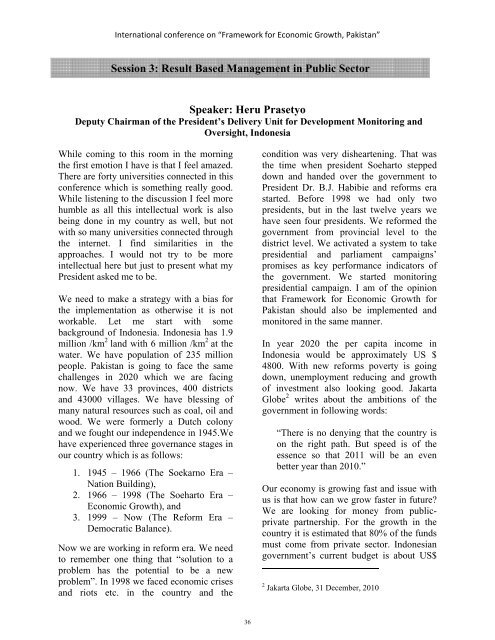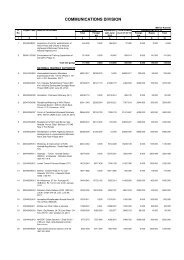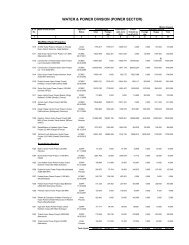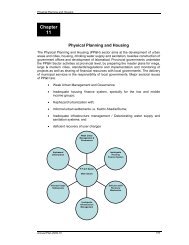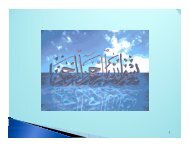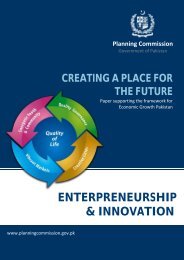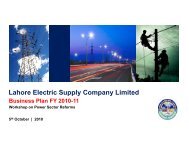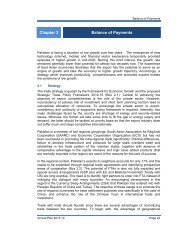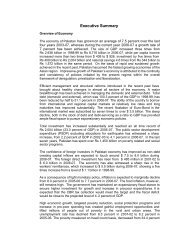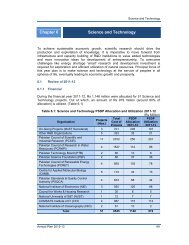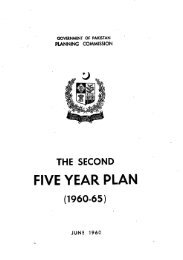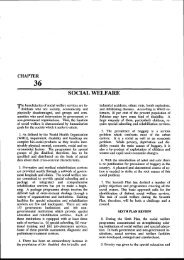Framework for Economic Growth, Pakistan - Planning Commission
Framework for Economic Growth, Pakistan - Planning Commission
Framework for Economic Growth, Pakistan - Planning Commission
You also want an ePaper? Increase the reach of your titles
YUMPU automatically turns print PDFs into web optimized ePapers that Google loves.
International conference on “<strong>Framework</strong> <strong>for</strong> <strong>Economic</strong> <strong>Growth</strong>, <strong>Pakistan</strong>”Session 3: Result Based Management in Public SectorSpeaker: Heru PrasetyoDeputy Chairman of the President’s Delivery Unit <strong>for</strong> Development Monitoring andOversight, IndonesiaWhile coming to this room in the morningthe first emotion I have is that I feel amazed.There are <strong>for</strong>ty universities connected in thisconference which is something really good.While listening to the discussion I feel morehumble as all this intellectual work is alsobeing done in my country as well, but notwith so many universities connected throughthe internet. I find similarities in theapproaches. I would not try to be moreintellectual here but just to present what myPresident asked me to be.We need to make a strategy with a bias <strong>for</strong>the implementation as otherwise it is notworkable. Let me start with somebackground of Indonesia. Indonesia has 1.9million /km 2 land with 6 million /km 2 at thewater. We have population of 235 millionpeople. <strong>Pakistan</strong> is going to face the samechallenges in 2020 which we are facingnow. We have 33 provinces, 400 districtsand 43000 villages. We have blessing ofmany natural resources such as coal, oil andwood. We were <strong>for</strong>merly a Dutch colonyand we fought our independence in 1945.Wehave experienced three governance stages inour country which is as follows:1. 1945 – 1966 (The Soekarno Era –Nation Building),2. 1966 – 1998 (The Soeharto Era –<strong>Economic</strong> <strong>Growth</strong>), and3. 1999 – Now (The Re<strong>for</strong>m Era –Democratic Balance).Now we are working in re<strong>for</strong>m era. We needto remember one thing that “solution to aproblem has the potential to be a newproblem”. In 1998 we faced economic crisesand riots etc. in the country and thecondition was very disheartening. That wasthe time when president Soeharto steppeddown and handed over the government toPresident Dr. B.J. Habibie and re<strong>for</strong>ms erastarted. Be<strong>for</strong>e 1998 we had only twopresidents, but in the last twelve years wehave seen four presidents. We re<strong>for</strong>med thegovernment from provincial level to thedistrict level. We activated a system to takepresidential and parliament campaigns’promises as key per<strong>for</strong>mance indicators ofthe government. We started monitoringpresidential campaign. I am of the opinionthat <strong>Framework</strong> <strong>for</strong> <strong>Economic</strong> <strong>Growth</strong> <strong>for</strong><strong>Pakistan</strong> should also be implemented andmonitored in the same manner.In year 2020 the per capita income inIndonesia would be approximately US $4800. With new re<strong>for</strong>ms poverty is goingdown, unemployment reducing and growthof investment also looking good. JakartaGlobe 2 writes about the ambitions of thegovernment in following words:“There is no denying that the country ison the right path. But speed is of theessence so that 2011 will be an evenbetter year than 2010.”Our economy is growing fast and issue withus is that how can we grow faster in future?We are looking <strong>for</strong> money from publicprivatepartnership. For the growth in thecountry it is estimated that 80% of the fundsmust come from private sector. Indonesiangovernment’s current budget is about US$2 Jakarta Globe, 31 December, 201036


